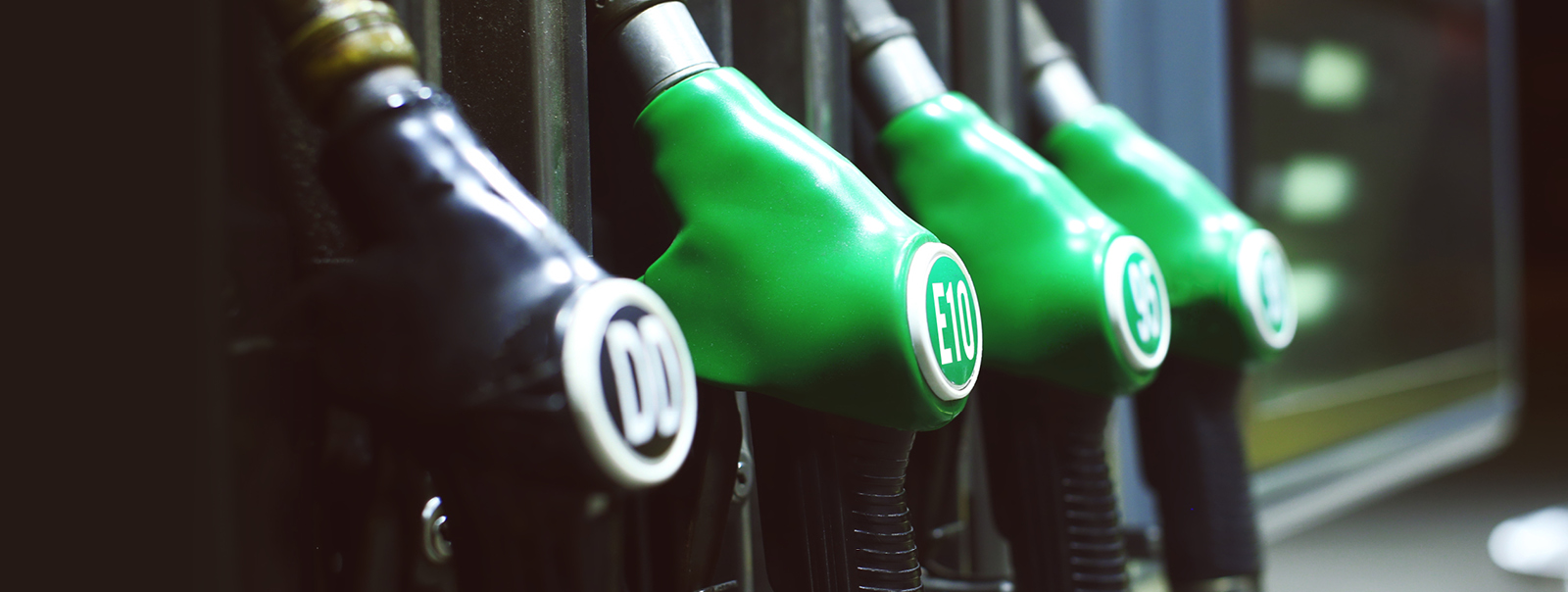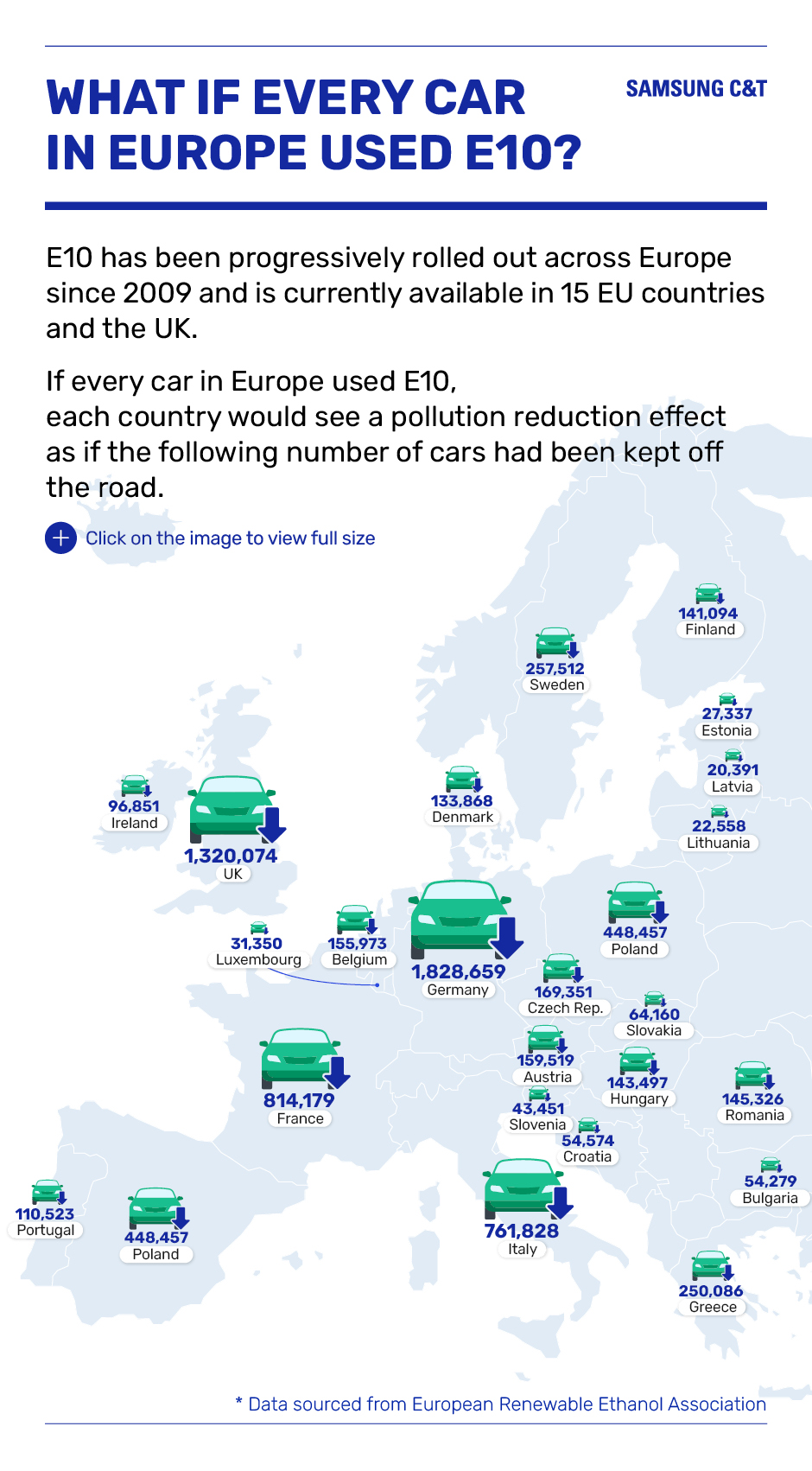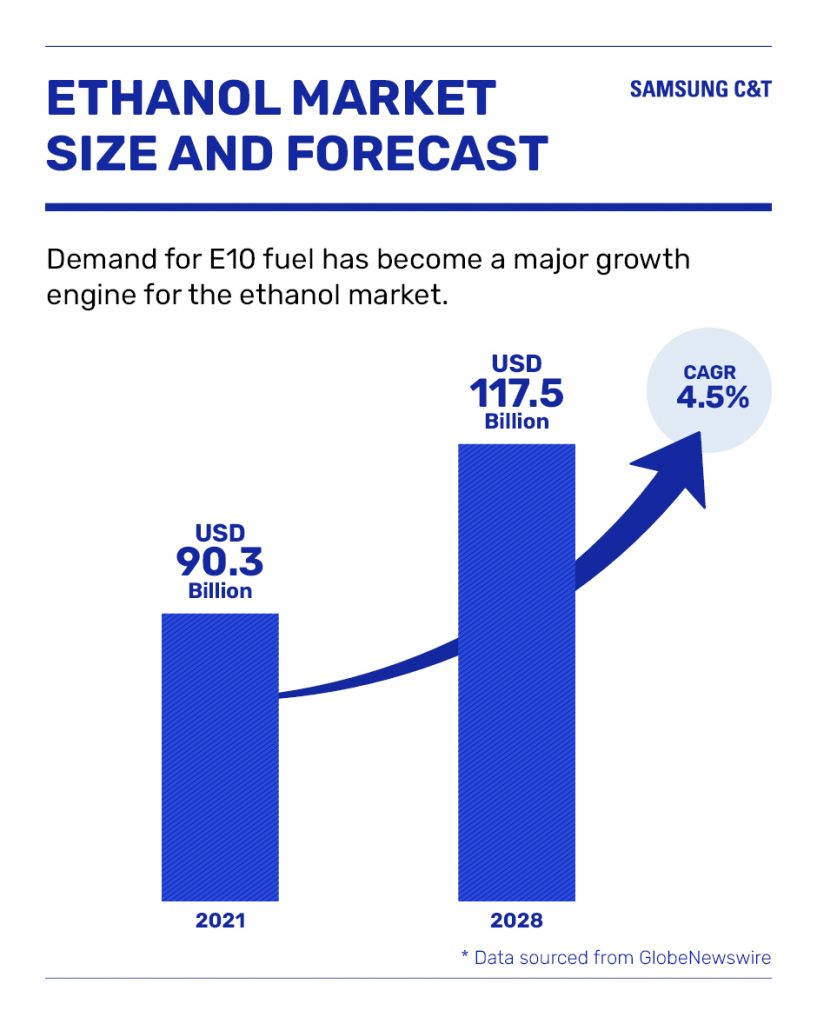At a glance
- More countries around the world are embracing E10 fuel
- E10 is unleaded gasoline that contains up to 10% ethanol
- Driven by E10, the ethanol market is set for significant growth
Amid an energy crisis and soaring fuel prices across the world this year, there has been increasing pressure to source alternatives to gasoline. And while electric vehicles are certainly part of that picture, a type of fuel known as “E10” continues to emerge as an important option, with numerous nations embracing this choice.
Surprisingly, E10 isn’t exactly a gasoline alternative but rather a chemical innovation that makes regular fuel cleaner. Let’s find out more about what it is, how it works, and why various countries are taking interest.

Understanding the E10 trend
The key to understanding E10 is to realize that the E stands for ethanol, as E10 is made up of 90% regular unleaded fuel and 10% bioethanol. Many people will have heard of ethanol as a simple alcohol, and we apply ‘bio’ in this case because most of the world’s fuel ethanol is obtained from plants.
The chief benefit of using E10 fuel is that it can lower harmful emissions, as research has confirmed bioethanol’s carbon footprint and greenhouse gas reduction benefits. These advantages are partly due to the way fuel ethanol is produced, and partly because it offers greater energy efficiency with a higher octane rating than regular gasoline. Octane ratings are measures of fuel stability – the higher the octane rating, the better the fuel burns. And E10’s superiority has been responsible for it becoming the reference fuel against which new cars have been tested for emissions and performance since 2016, while car enthusiasts may be inspired by the elite motorsport series Formula 1 changing its fuel to E10 this year in an effort to reduce carbon dioxide (CO2) emissions.
The UK is one of the current areas of E10 focus because all of the nation has made this fuel its standard as of this month, and the government hopes E10 could help cut transport CO2 emissions by 750,000 tonnes per year. Yet, the UK has several other case studies to refer to. For instance, almost all U.S. gasoline was blended with 10% bioethanol as long ago as 2016, while E10 had become the top-selling petrol in France by 2017. More recently, E10 use in India has been rising, and Brazil has for a long time used much higher percentages of bioethanol in its fuel than E10.
But E10 has also faced some challenges. For example, sales of E10 fell in Germany in 2016 because of concerns that it is not suitable for all cars, despite being able to boast a price advantage. While nearly all vehicles manufactured after 2000 can be fueled using E10, older models need to be modified. And an even bigger issue facing Germany and the rest of the world is the price of fuel. Although bioethanol has been cheaper this year than straight gasoline, and E10 is usually cheaper than E5 (with 5% ethanol) in the UK, concerns have been raised that E10 may lower a car’s fuel economy compared with E5. The rising price of fuel generally will inevitably lead to more drivers considering alternatives such as electric and hydrogen-powered vehicles. Looking further ahead, the European Union has agreed that new cars must be emissions-free after 2035, casting doubt on fuel ethanol’s long-term future.
Yet, the transition to an emissions-free global transport ecosystem will be gradual, and E10 is helping to reduce emissions during this shift. Even just in Europe, let’s take a look at the potential impact if every car used E10 fuel.
Driving ethanol upward
As E10 fuel use rises, demand for bioethanol is naturally also increasing. In fact, the bioethanol consumption trend is a major factor driving up the overall global ethanol market, which is set to reach USD 117.5 billion by 2028, growing at a CAGR of 4.5%.
We find further evidence in some specific trends. For instance, Brazil is set to export a record volume of ethanol this year to Europe, where ethanol consumption also reached a new high last year. And despite E10’s difficulties in Germany, it is expected to be the EU’s top ethanol consumer this year, followed by France, the Netherlands, and Poland.
What is Samsung C&T's role?
The rise of E10 fuel aligns with Samsung C&T Trading & Investment Group’s pursuit of cleaner and more sustainable energy solutions. In addition, Samsung C&T is closely watching eco-friendly markets while expanding related businesses such as solar power and hydrogen. As we recently discussed, green hydrogen holds great potential for a number of industries, including transportation. Unlike E10 fuel, hydrogen fuel cells emit only water vapor and warm air. But building a hydrogen economy, along other clean energy infrastructure, takes time, and E10 is helping to drive us in the right direction.









